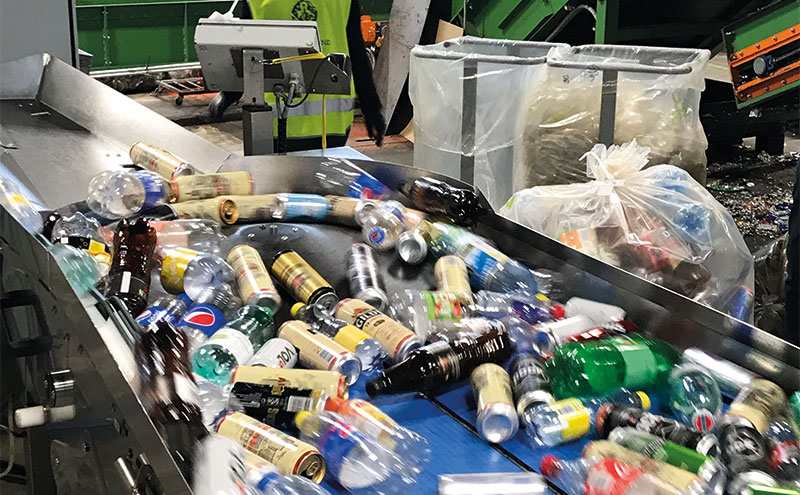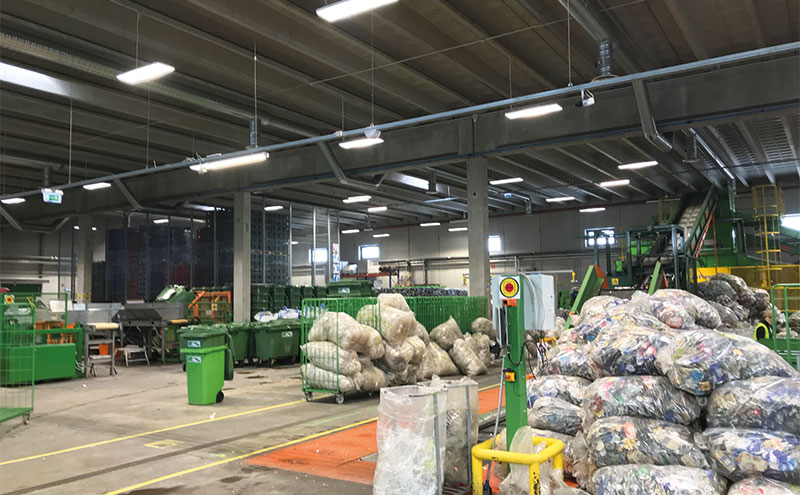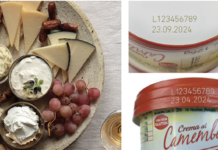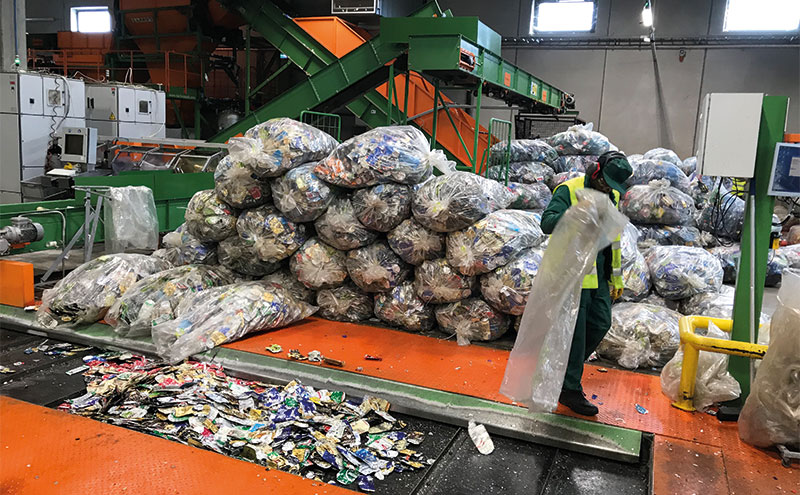
With Scotland poised to introduce a deposit return system for drinks containers in the coming years, Packaging Scotland’s Fraser Rummens recently visited Estonia to see an example of an existing scheme in operation and find out what lessons can be learned from the experiences of other countries
PACKAGING finds itself at the top of the news agenda once again with UK Environment Secretary Michael Gove’s recent announcement that England would follow Scotland’s lead by introducing a deposit return system (DRS) for single-use drinks containers.
Scotland’s First Minister Nicola Sturgeon announced in September last year that the country would introduce a DRS, which aims to combat plastic pollution and up recycling rates. Many European countries including Norway, Sweden, Denmark and Germany have already introduced such systems.
Scotland’s system is currently being designed by Zero Waste Scotland for public consultation later this year.
Gove’s announcement hit the headlines the morning after a hardy group of campaigners, independent retailers, bar owners and trade journalists – myself included – returned from a three-day excursion to the Baltic country of Estonia where we observed how the country’s system operates.
We were in the capital city Tallinn, which, with a population comparable to that of Edinburgh, is the country’s lifeblood, where a bustling cityscape merges with preserved medieval architecture.
The former Soviet-occupied nation gained its independence in 1991 and joined the EU in 2004, with the DRS coming into force in 2005 following the drafting of a new Packaging Act. The Act dictates that the seller of goods is obliged to take back the sales packages and packaging waste of the goods at the point of sale or its immediate vicinity, free of charge, from the consumer.
Estonia’s DRS is operated by Eesti Pandipakend (EPP), a not-for-profit producer responsibility organisation. It is financed mainly though fees paid by producers (fillers and importers), unredeemed deposits and income received from the sales of collected materials. When joining the deposit scheme, producers pay a one-off enrolment fee of €100 to EPP. An additional fee of €60 is paid for the registration of new product packaging on the EPP Packaging Register.
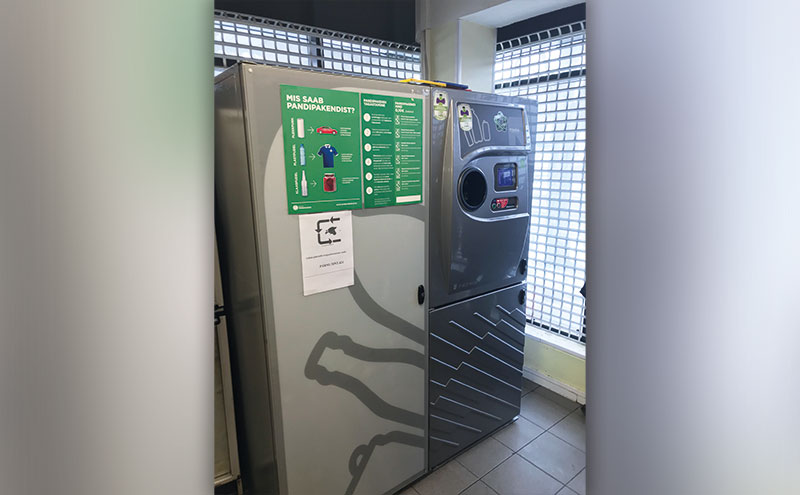

EPP is equally owned by four stakeholders – the Association of Producers of Soft Drinks; the Association of Importers of Soft Drinks and Beer; the Estonian Association of Brewers; and the Estonian Retailers Association.
Consumers return their bottles primarily through a network of reverse vending machines (RVMs) located throughout the city, in supermarkets, convenience stores and car parks. Manual returns are also carried out. The current deposit value is €0.10.
The returned bottles are collected by EPP and taken to its sorting facility, which we visited. An impressive barn of a place – all chutes and ladders, buzz, whir, clatter and bang. It is here that the materials are sorted and compacted before being sold on. Our tour was followed by a presentation from EPP CEO Rauno Raal. I asked him what advice he had for Scotland when implementing a DRS and he said it could be summed up in one word – control.
“I came in 2008 and started to work on management as part of strategy change because we were almost bankrupt because we didn’t have any control,” Rauno told me. “We had massive fraud in the system and there was no controlling the procedures in place so I think what other countries can learn is, from day one, you must have a very detailed (strategy for control). I can’t emphasise that enough.”
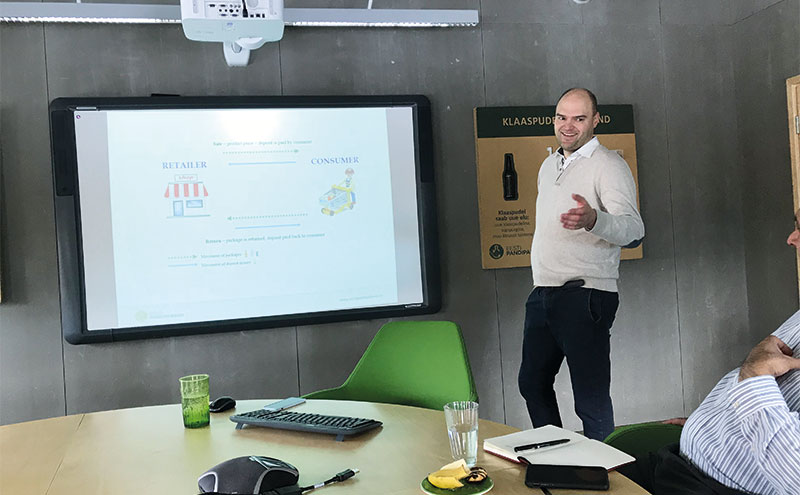

When asked how long he thought it would take for a DRS to be up and running in Scotland, Rauno reckoned anywhere between one-and-a-half to two years.
The trip was organised by Have You Got the Bottle? (HYGTB), who campaigned for the introduction of a DRS in Scotland. I sat down with its representatives at the end of a whistle-stop tour of the city’s various RVM locations, to discuss what they wanted to achieve with the trip.
“One of the goals of this trip was to give people the opportunity to experience deposit return first-hand in a country which we think has one of the good examples of how it works,” Jenni Hume, HYGTB campaign manager told me.
“We especially wanted retailers to have the chance to see it because they’re going to be an important stakeholder in deposit return when it comes to Scotland. We also received funding from the Esmée Fairbairn Foundation and they’re keen for us to bring different shareholders together to have the opportunity to explore and learn – so that’s why we’ve got people from the hospitality sector as well as journalists with us.”
John Mayhew, director of the Association for the Protection of Rural Scotland (APRS), the charity running the HYGTB campaign, added, “It’s neither a system that’s been around for so long that nobody can remember how on earth it was set up and how it ended up the way it is; nor is it brand new and still working its way through the initial problems.
“We want the system to work as well as it possibly can from day one, and that’s why it’s a good idea to learn from other countries.”
James Mackenzie, political media consultant for the HYGTB campaign said the packaging industry were, in his view, among the most sceptical of DRS but he was hopeful that they will eventually see it as a normal part of doing business.
“If I were in the packaging industry in Scotland, my number one interest now would be what specific system design for deposit return in Scotland is the most efficient because that will be the cheapest for me and if I were them I’d be doing what we’re doing,” said James.
“I’m trying to think if I was a packaging manufacturer, why am I concerned about this and I presume it’s because there’s an extra cost coming in. Somebody is going to charge me this tiny amount extra for each package I put on the market because that’s my contribution to the system and I suppose I’d make two points to that – one is that it’s an equal playing field. Every packaging manufacturer in the land has got to pay it, so it’s not altering your competition with the other manufacturers and the other is that for that very small amount of money you’re buying reputational improvement; litter reduction; better materials; a circular economy; job creation; a greener country; leading the way over the rest of the UK – you’re buying a whole load of benefits for Scotland.”
James said he thought the fee for a packaging producer in Scotland would be around a fraction of a penny per item.
He continued, “The bottom line is it is part of the trend towards extended producer responsibility. At the moment in the UK it’s mostly done through the Packaging Recovery Note and it’s pretty opaque. A lot of people in industries badmouth it all the time. I listen to all sorts of people from the producer side criticise it, so this is coming and it’s the same logic; you’re responsible for your product and with deposits, you get almost all of it back…So I think they need to come and talk to their counterparts and in the same way that other businesses, particularly big retailers, are using their support for it to show that they care about plastic litter, I think it will be good for the packaging industry to say ‘OK, we are going to step up. We accept that it’s coming in Scotland; let’s make it work for us, let’s make it work for society’.”
The following morning we headed to the Ministry of the Environment to meet with Peeter Eek, advisor and the country’s “godfather of deposit return”, as Rauno described him.
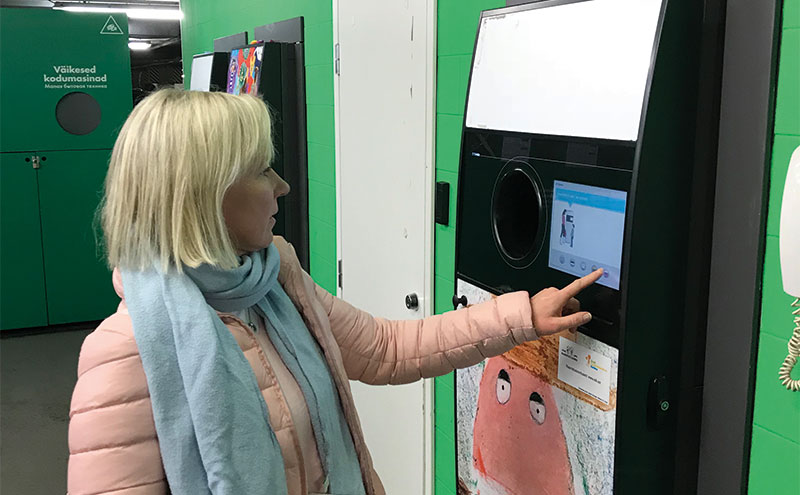

Peeter echoed Rauno’s point about the importance of system regulation and control calling it “crucial from the very beginning” and during a spirited two-hour discussion, we touched on potential packaging issues a DRS could raise in Scotland; one being that of country-specific labelling, as RVMs read the returned bottle’s label to verify that it was actually purchased in that country. On the back of that, Peeter advised against putting a numeric value on the labelling as this could complicate things if the initial deposit fee was increased in the future. He also recommended a fee of no less than ten pence and advised that packaging producers simplify their packaging in a bid to improve recyclability.
I got chatting to Mo Razzaq, councillor for South Lanarkshire Council, independent retailer with Family shopper, Blantyre and chairperson of the National Federation of Retail Newsagents Scotland (NFRN) committee for DRS, over the course of the trip. He told me that his business was in the process of installing a desert bar and he was surprised at how difficult it was to get easy access to eco-friendly packaging online.
“I made a serious point of looking at that side of packaging, which I’d never done before. The one thing I found was it was very difficult to navigate. It was very difficult to get proper information and I was very disappointed with that. I thought in this day and age with the Internet and everything else there would be some websites guiding you but that’s not been the case,” Mo said.
“I think the packaging industry has got a chance to reach out not just to the general population, but to councils and also to businesses and give them good information and give them good leads because there is a serious danger of people looking abroad for a solution rather than looking within and the solutions are within Scotland. If the packaging industry can put together some sort of website…then it is a bridge for the retailer to get to the information and the products they are looking for, and sadly that’s not the case just now and that needs to be done.”
Reflecting on the trip, Mo said he hadn’t realised how the producer fee could impact the packaging industry and he now had a better understanding of its concerns. “It might be half a pence per item but that half a pence, if you work it out to thousands of products, it’s going to come to a hefty amount. So there is a cost involved and I can totally understand now why the packaging industry is so against this because it’s going to hit their bottom line.”
Mo added, “we need to be partners in this and if we’re not partners in this there’s going to be a lot of confusion, it could cost both industries a lot of money. Now, we could make it viable if we work together because we’re all businesses and businesses come to agreements that are mutually beneficial.
“We want the system to work as well as it possibly can from day one, and that’s why it’s a good idea to learn from other countries.”
James Mackenzie, political media consultant for the HYGTB campaign said the packaging industry was, in his view, among the most sceptical of DRS but he was hopeful that it will eventually see it as a normal part of doing business.
“If I were in the packaging industry in Scotland, my number one interest now would be what specific system design for deposit return in Scotland is the most efficient because that will be the cheapest for me and if I were them I’d be doing what we’re doing,” said James.
“I’m trying to think if I was a packaging manufacturer, why am I concerned about this and I presume it’s because there’s an extra cost coming in. Somebody is going to charge me this tiny amount extra for each package I put on the market because that’s my contribution to the system and I suppose I’d make two points to that. One is that it’s an equal playing field; every packaging manufacturer in the land has got to pay it so it’s not altering your competition with the other manufacturers. The other is that for that very small amount of money, you’re buying reputational improvement; litter reduction; better materials; a circular economy; job creation; a greener country; leading the way over the rest of the UK – you’re buying a whole load of benefits for Scotland.”
James said he thought the fee for a packaging producer in Scotland would be around a fraction of a penny per item.
He continued, “The bottom line is it is part of the trend towards extended producer responsibility. At the moment in the UK it’s mostly done through the Packaging Recovery Note and it’s pretty opaque. A lot of people in industries bad-mouth it all the time. I listen to all sorts of people from the producer side criticise it, so this is coming and it’s the same logic; you’re responsible for your product and with deposits, you get almost all of it back.
“So I think they need to come and talk to their counterparts and in the same way that other businesses – particularly big retailers – are using their support for it to show that they care about plastic litter. I think it will be good for the packaging industry to say ‘OK, we are going to step up. We accept that it’s coming in Scotland; let’s make it work for us, let’s make it work for society’.”
The following morning we headed to the Ministry of the Environment to meet with Peeter Eek, advisor and the country’s “godfather of deposit return”, as Rauno described him.
Peeter echoed Rauno’s point about the importance of system regulation and control, calling it “crucial from the very beginning”. During a spirited two-hour discussion, we touched on potential packaging issues a DRS could raise in Scotland; one being that of country-specific labelling, as RVMs read the returned bottle’s label to verify that it was actually purchased in that country. On the back of that, Peeter advised against putting a numeric value on the labelling as this could complicate things if the initial deposit fee was increased in the future. He also recommended a value of no less than ten pence and advised that packaging producers simplify their packaging in a bid to improve recyclability.
I also got chatting to Mo Razzaq, a Labour councillor for South Lanarkshire Council, independent retailer with Family Shopper, Blantyre and chairperson of the National Federation of Retail Newsagents Scotland (NFRN) committee for DRS, over the course of the trip.
He told me that his business was in the process of installing a dessert bar and he was surprised at how difficult it was to get easy access to eco-friendly packaging online.
“I made a serious point of looking at that side of packaging, which I’d never done before. The one thing I found was it was very difficult to navigate. It was very difficult to get proper information and I was very disappointed with that. I thought in this day and age with the Internet and everything else there would be some websites guiding you but that’s not been the case,” Mo said.
“I think the packaging industry has got a chance to reach out not just to the general population, but to councils and also to businesses and give them good information and give them good leads because there is a serious danger of people looking abroad for a solution rather than looking within and the solutions are within Scotland. If the packaging industry can put together some sort of website…then it is a bridge for the retailer to get to the information and the products they are looking for, and sadly that’s not the case just now and that needs to be done.”
Reflecting on the trip, Mo said he hadn’t realised how the producer fee could impact the packaging industry and he now had a better understanding of its concerns.
“It might be half a pence per item but that half a pence, if you work it out to thousands of products, it’s going to come to a hefty amount. So there is a cost involved and I can totally understand now why the packaging industry is so against this because it’s going to hit their bottom line.”
Mo added, “We need to be partners in this and if we’re not partners in this there’s going to be a lot of confusion, it could cost both industries a lot of money. Now, we could make it viable if we work together because we’re all businesses and businesses come to agreements that are mutually beneficial.”


